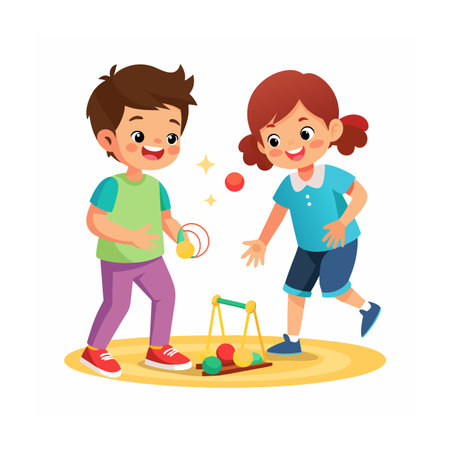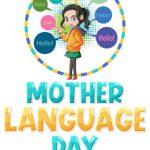1. The Importance of Early Math Skills
Math skills are an essential part of a childs development, and building a strong foundation early can help set them up for success in school and beyond. While many parents focus on reading and language development, early math skills are just as important. These skills help children understand patterns, problem-solving, and logical thinking, which are crucial for everyday life.
How Early Math Skills Support Learning
Understanding numbers and basic math concepts at a young age helps children develop critical thinking abilities. These skills also support learning in other subjects like science, technology, and even reading comprehension. Studies show that children who start with strong math skills tend to perform better academically later in life.
Key Benefits of Early Math Development
| Benefit | Description |
|---|---|
| Problem-Solving | Helps children learn how to analyze situations and find solutions. |
| Logical Thinking | Encourages kids to recognize patterns and make connections between ideas. |
| Confidence in Learning | A strong start in math builds confidence in tackling new challenges. |
| Preparation for School | Makes the transition into formal education smoother by introducing basic concepts early. |
The Role of Play in Early Math Development
The best way to introduce math concepts to young children is through play. Simple activities like counting toys, sorting objects by color or shape, and playing with building blocks help reinforce early math understanding in a fun and engaging way. When kids enjoy learning, they are more likely to retain information and develop a positive attitude toward math.
Tips for Encouraging Math Through Play
- Use Everyday Objects: Count apples at the grocery store or sort socks by color while doing laundry.
- Singing and Rhymes: Songs with numbers and counting help reinforce early math skills naturally.
- Puzzles and Games: Simple board games that involve counting spaces or matching shapes build foundational skills.
- Create Hands-On Activities: Let kids explore measuring cups while cooking or play with toy money to practice basic counting.
A Strong Foundation for Future Success
The more opportunities children have to engage with numbers and patterns in their daily lives, the stronger their math foundation will be. By making math fun through play, parents can help their little ones develop skills that will benefit them throughout their education and beyond.
2. Incorporating Math into Everyday Play
Helping young children develop early math skills doesn’t require special tools or structured lessons. Instead, you can integrate math concepts into everyday play and activities naturally. By making math a part of their daily routine, children will learn while having fun.
Counting with Toys
One of the easiest ways to introduce numbers is through counting toys during playtime. Encourage your child to count blocks, cars, stuffed animals, or any other favorite toys.
Simple Counting Activities
| Activity | Description |
|---|---|
| Stacking Blocks | Ask your child to count the number of blocks as they stack them. |
| Toy Cleanup | Make cleaning up fun by counting each toy as it goes back into the bin. |
| Stuffed Animal Parade | Line up stuffed animals and count them together. |
Recognizing Patterns
Patterns help children understand sequences and logical thinking. You can introduce patterns using everyday objects like toys, snacks, or clothing.
Fun Pattern Activities
- Create color patterns using building blocks (e.g., red-blue-red-blue).
- Use different snack items (like crackers and grapes) to make edible patterns.
- Clap or tap in a pattern (e.g., clap-clap-tap, clap-clap-tap) and ask your child to copy it.
Exploring Shapes Around the House
You can turn everyday objects into a shape-finding adventure. Ask your child to find circles, squares, triangles, and rectangles in their surroundings.
Shape Hunt Ideas
- “Can you find something shaped like a circle?” (Plates, clocks)
- “What do you see that looks like a rectangle?” (Doors, books)
- “Point to something shaped like a triangle!” (Pizza slices, roof edges)
Comparing Sizes and Measurements
You can introduce basic measurement concepts by comparing objects around the house. Use words like bigger, smaller, longer, shorter, heavier, and lighter.
Measurement Play Activities
- Shoe Size Comparison: Line up family members shoes from smallest to largest.
- Tower Challenge: Build towers with blocks and compare their heights.
- Pouring Water: Use different-sized cups to explore which holds more or less water.
By incorporating these simple activities into playtime, children will start recognizing math concepts without even realizing they are learning. The key is to keep it fun and engaging!

3. Fun Games to Strengthen Number Sense
Helping young children develop a strong number sense is essential for their early math skills. Through engaging and interactive games, kids can learn number recognition, comparison, and even basic addition and subtraction in a fun way. Below are some exciting games that make learning numbers enjoyable.
Number Hunt
This game helps children recognize numbers while staying active.
How to Play:
- Write numbers on index cards and hide them around the room.
- Call out a number, and have your child find the matching card.
- For an extra challenge, ask them to find two numbers that add up to a given sum.
Roll and Compare
A simple dice game that teaches number comparison skills.
How to Play:
- Give each player a die (or two for advanced play).
- Players roll their dice at the same time.
- The player with the higher number wins that round.
- Add a math twist by having them subtract or add the two numbers together.
Bottle Cap Addition
A hands-on way to introduce basic addition using everyday items.
Materials Needed:
- Bottle caps with numbers written on them
- A small container or bowl
How to Play:
- Mix up the bottle caps and have your child pick two at random.
- Ask them to add the numbers together and say the sum out loud.
- If they get it right, they keep the caps. If not, put them back in the pile.
Toss and Count
This game combines movement with counting practice.
How to Play:
- Create a target using a basket or a bowl.
- Give your child small objects like bean bags or soft balls to toss into the target.
- After each turn, count how many landed inside.
- Add an extra challenge by asking them to subtract any missed throws from their total score.
Quick Reference Table
| Game Name | Main Skill Learned | Main Materials Needed |
|---|---|---|
| Number Hunt | Number Recognition & Basic Addition | Index Cards with Numbers |
| Roll and Compare | Number Comparison & Basic Arithmetic | Dices |
| Bottle Cap Addition | Addition Skills | Bottle Caps with Numbers |
| Toss and Count | Counting & Subtraction Practice | Balls or Bean Bags, Basket/Bowl |
These games make learning math fun while reinforcing essential number concepts. Try incorporating them into daily playtime for an enjoyable and educational experience!
4. Hands-On Activities for Spatial Awareness
Developing spatial awareness is a key part of early math learning. When kids explore how objects fit together, move, and relate to each other, they build foundational skills for geometry, problem-solving, and critical thinking. Engaging in hands-on activities like puzzles, block building, and interactive play helps children develop these important skills naturally.
Puzzle Play for Problem-Solving
Puzzles are an excellent way to encourage spatial reasoning. They help children recognize patterns, understand shapes, and improve hand-eye coordination. Try introducing different types of puzzles based on your child’s age and skill level:
| Age Group | Puzzle Type | Skill Development |
|---|---|---|
| Toddlers (1-2 years) | Large wooden shape puzzles | Basic shape recognition and fine motor skills |
| Preschoolers (3-4 years) | Simple jigsaw puzzles (4-12 pieces) | Problem-solving and pattern recognition |
| Early learners (5+ years) | More complex jigsaw puzzles (20+ pieces) | Spatial reasoning and critical thinking |
Building with Blocks
Block play is a fantastic way for young learners to explore spatial relationships. Whether they’re stacking, balancing, or creating structures, kids learn about size, symmetry, and balance through hands-on experimentation. Here are some fun ways to use blocks to boost early math skills:
- Stacking Challenges: Encourage kids to build the tallest tower without it falling over.
- Shape Matching: Provide different shaped blocks and ask them to create patterns or match similar shapes.
- Blueprint Creations: Show a simple structure (like a house or bridge) and challenge them to replicate it using blocks.
Interactive Games for Spatial Thinking
Apart from puzzles and blocks, there are many engaging activities that promote spatial awareness while keeping playtime fun:
- Treasure Hunts: Hide objects around the house and give directional clues like “under the chair” or “next to the table.”
- Tangrams & Shape Sorting: Use tangram sets or household items to create pictures by arranging different shapes.
- Obstacle Courses: Set up a simple indoor or outdoor obstacle course where kids must crawl under tables, jump over cushions, or weave between cones.
The Power of Play in Spatial Learning
By incorporating these hands-on activities into daily playtime, children naturally develop stronger spatial reasoning skills. Whether through puzzles, block-building challenges, or interactive games, every playful experience helps lay the foundation for future math success.
5. Using Stories and Songs for Math Learning
Storytelling and music are powerful tools for helping young learners develop early math skills. Through engaging narratives and catchy tunes, children can grasp fundamental math concepts like sequencing, rhythm, and counting in a fun and memorable way.
How Storytelling Reinforces Math Skills
Stories naturally introduce sequencing, patterns, and problem-solving, which are essential math skills. When children listen to or create stories, they learn about order, logic, and cause-and-effect relationships.
Examples of Math Concepts in Storytelling
| Math Concept | How Stories Help | Example |
|---|---|---|
| Sequencing | Children follow events in order, reinforcing number sequences. | “The Three Little Pigs” – First house, second house, third house. |
| Patterns | Narratives with repeating phrases help kids recognize patterns. | “Brown Bear, Brown Bear, What Do You See?” – Repetitive structure. |
| Counting | Tales featuring numbers encourage counting practice. | “Goldilocks and the Three Bears” – Three bowls, three chairs. |
| Problem-Solving | Characters face challenges that involve logical thinking. | “Jack and the Beanstalk” – Measuring how high the beanstalk grows. |
The Role of Music in Math Learning
Songs naturally incorporate rhythm, counting, and patterns—key components of early math development. Music makes learning interactive and enjoyable while reinforcing essential skills.
Songs That Teach Math Concepts
- “Five Little Monkeys”: Helps with subtraction as monkeys jump off the bed one by one.
- “Ten in the Bed”: Encourages counting backward from ten.
- “The Ants Go Marching”: Teaches number patterns as ants march in increasing groups.
- “This Old Man”: Reinforces number recognition through rhyming and repetition.
Tips for Using Stories and Songs at Home
Create Your Own Counting Stories
Encourage your child to invent simple stories that include numbers. For example: “Three little cars drove to the park. One stopped for gas, so now there are two!” This helps them practice basic arithmetic in a creative way.
Singing During Daily Routines
You can integrate math songs into everyday activities. Sing counting songs while setting the table (“One plate, two plates…”) or during clean-up time (“Lets pick up five toys!”). These small moments reinforce math skills effortlessly.
Add Movement to Songs
Dancing or using hand motions with math-related songs enhances engagement. For example, when singing “Five Little Ducks,” hold up fingers to represent each duck disappearing and returning. This visual aid strengthens understanding of addition and subtraction.
By incorporating storytelling and music into daily playtime, children can develop essential math skills in an enjoyable way. These activities make learning feel natural and exciting while laying a strong foundation for future mathematical understanding.
6. Encouraging a Positive Math Mindset
Helping young learners develop confidence in math starts with fostering a positive attitude. When children see math as fun and engaging, they are more likely to explore new concepts without fear. Here are some simple ways to build a strong foundation for a lifelong love of math.
Praise Effort Over Perfection
Encouraging children to enjoy the process rather than just focusing on correct answers helps them develop resilience and confidence. Celebrate their effort and curiosity with phrases like:
| Instead of Saying | Try Saying |
|---|---|
| “That’s wrong, try again.” | “Great thinking! Let’s figure it out together.” |
| “You’re so smart!” | “I love how you kept trying different ways to solve it!” |
| “This is easy.” | “Some problems take time, and that’s okay!” |
Make Math Part of Everyday Life
Connecting math to real-world experiences helps children understand its value. Look for opportunities in daily activities:
- Cooking: Let kids measure ingredients or count items while preparing meals.
- Shopping: Have them compare prices or count coins at the store.
- Outdoor Play: Count steps, measure distances, or look for patterns in nature.
- Telling Time: Involve children in reading clocks or estimating how long tasks take.
Create a Safe Space for Exploration
Avoid pressure or frustration by allowing children to experiment with numbers in a stress-free environment. Provide hands-on materials like blocks, puzzles, and number games so they can explore mathematical ideas at their own pace.
A Few Fun Exploration Ideas:
- Puzzle Challenges: Build problem-solving skills with shape and number puzzles.
- Dramatic Play: Set up a pretend store where kids can “buy” and “sell” items using play money.
- Sensory Play: Use sand, water, or playdough to form numbers and shapes.
- Songs & Rhymes: Sing counting songs to reinforce numerical patterns in a fun way.
Nurturing Curiosity Through Questions
Encouraging open-ended thinking helps children develop problem-solving skills. Instead of giving direct answers, ask guiding questions such as:
- “How did you figure that out?”
- “What do you think will happen if we change this number?”
- “Can you show me another way to solve it?”
- “Why do you think that answer makes sense?”
A Positive Approach Leads to Growth
The goal is to make math enjoyable and approachable so that children feel confident exploring new ideas. By celebrating effort, incorporating math into daily life, and encouraging curiosity through exploration, young learners will develop a positive relationship with numbers that lasts a lifetime.


